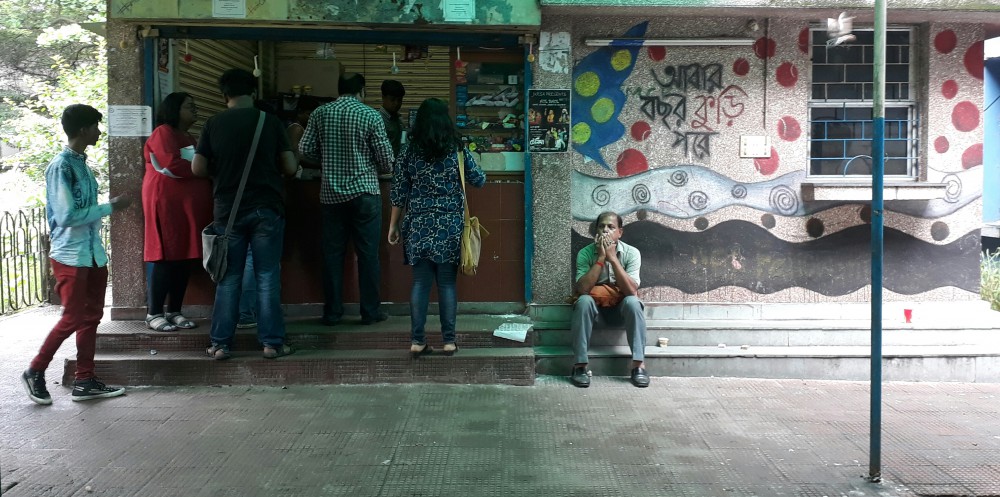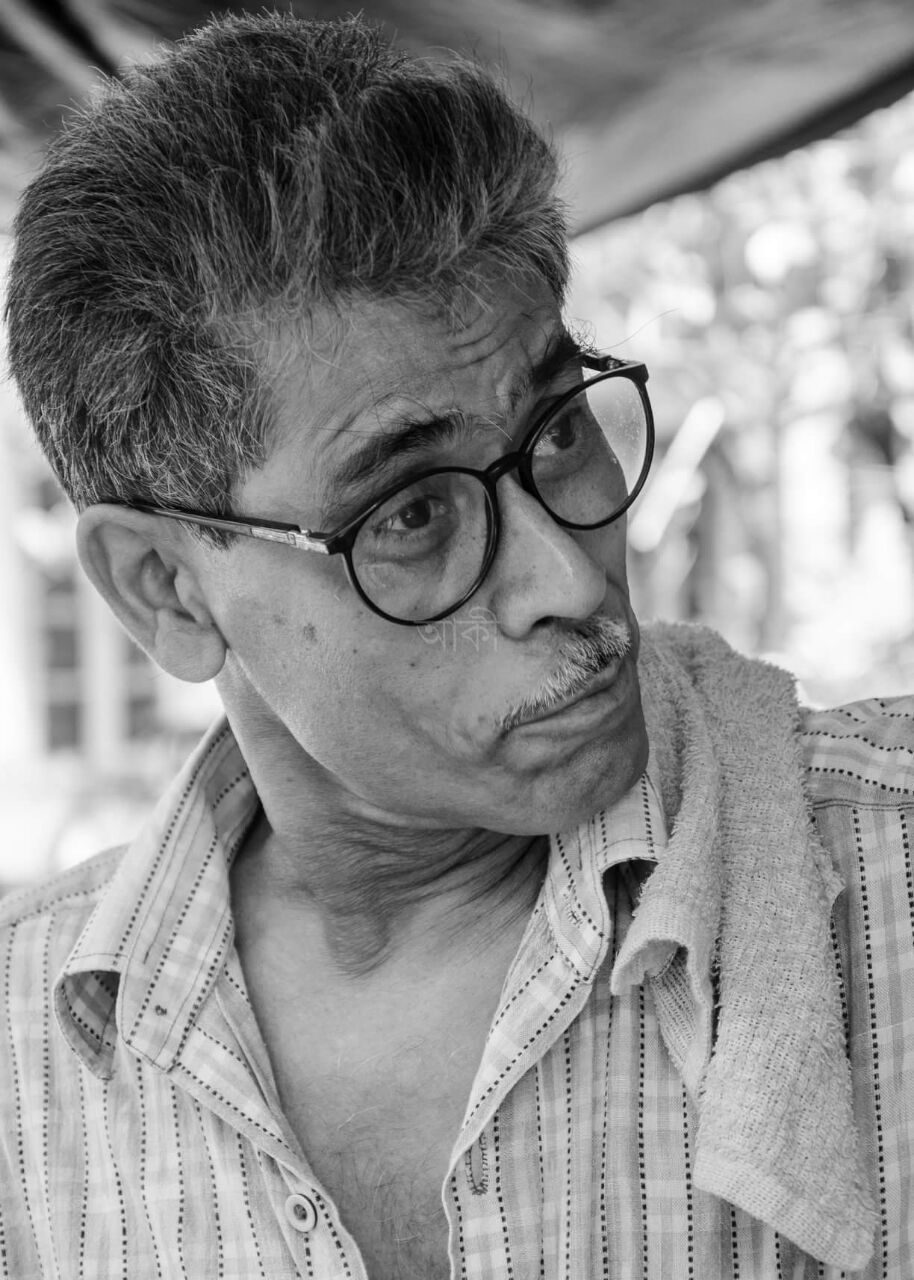As I stand amidst the crowd of students, teachers, alumni and staff silently watching the hearse bearing the body of Milon-da out of gate 4, I marvel at the way in which he touched the lives of so many generations of people at Jadavpur University. My memories of being a student at JU will always include addas with friends at Milon-da’s canteen over numerous cups of tea, wolfing down chops and ginger biscuits that were affordable enough for students to offer as treats to friends. Milon-da was non-judgemental, and allowed everyone to spend hours at his canteen even if they did not buy much. Even as a teacher, the canteen was where one went after lectures, to catch up with colleagues from other departments, and to feel the pulse of campus life. Milon-da’s tea and snacks have bolstered academic life in Jadavpur University for many decades, for he regularly supplied refreshments for everything from seminars and admission tests to Board of Studies meetings. It was only when I had to order food officially from his canteen as a rookie teacher that I learned that the name of the much-loved Milon-da’r canteen was actually Alapan Canteen.
I recall seeing Ashok Nath Basu, then Vice Chancellor of the University, going every morning to Milon-da’s canteen to meet with teachers and researchers. Some of the most eminent scholars of our time have had their share of tea at Milon-da’s, as have people of every political colour and orientation. Such was the popularity of his canteen that a Facebook page was named after it. That the good-natured and affable Milon-da befriended everyone regardless of their opinions and affiliations was clear from the very diverse nature of the crowd that gathered to bid him farewell today. Everybody was united in grief, and spontaneously walked alongside his hearse at it made its way through the campus.

Milon-da’s story is like that of many refugees, who struggled to begin a new life in epaar Bangla after facing poverty and deprivation in Bangladesh. Having come from across the border in the aftermath of the Bangladesh mukti juddha in 1972 with hardly any money and nowhere to live, he set up his makeshift canteen on a bit of scrubland on the campus where Subarna Jayanti Bhavan is now located. He began as one among many tea-sellers in and around the campus area who over the years have made a modest living catering to the University’s great thirst for chai. However, his tea stall became something of an institution after his recipe of dhoper chop proved to be a hit among students. After years of struggle, sleeping on the pavement opposite the University’s ‘Bengal Lamp’ gate, he managed build a small house in the suburbs, and brought his parents over from Bangladesh.
Watching his wife, affectionately called Bou-di by everyone on campus (regardless of their age) in tears as his body was placed in front of Subarna Jayanti Bhavan today made all of us feel sad; one felt as if an era had ended not only in her life but in the everyday life of the university as well. The first canteen had been operated by Milon-da out of a generator room at that very spot. The canteen moved to its present location, prospered and received upgradations during the NAAC visits. Regardless of the external changes to the canteen, Milon-da was the force who held the place together. Bou-di and Milon-da, along with their canteen workers, had become a part of the daily campus life of every student and teacher.
By the twenty-first century, Milon-da had diversified his menu to offer green tea and Darjeeling tea, along with the more familiar “liquor tea” or “gorom jol.” While he allowed multinational companies like Nestle to sell their beverages on campus, he also stocked the locally made “Frutus-G” ice lollies that a small local firm produced with technology developed in JU. Generations of students and teachers have cheerfully grumbled about the re-fried chops and muddy tea, but we all still went to Milon-da’s because it had a relaxed, laid-back atmosphere. Milon-da was easy-going, he would not complain about anyone putting up posters or painting graffiti on the walls of his canteen, and was receptive to our ideas – once, during the Gulf War, he allowed us teachers, led by Sajni-di (Professor Sajni Mukherjee) to use the space outside his canteen to sell home-made soft drinks as part of the “creative boycott” of American drinks like Coke and Pepsi.
This year, it was Bou-di and not Milon-da who asked me if I would be ordering food from the canteen for the admission tests in the English Department. For many years, Milon-da had supplied rotis and chicken curry (“fonir curry” for vegetarians) to the hundreds of volunteers and invigilators for our entrance exams. Over the last year or so, we had begun to see Milon-da less, and Bou-di and other members of his family took over the strenuous task of running the canteen from day to day. Milon-da, looking more fragile with each passing week, would often sit quietly in a chair behind the canteen. He was very ill, and yet he would respond with a smile when people approached him, making the effort to talk to them, as he had always done over the years. This year, he passed away during the BA Arts entrance exams, the time of year when he would be most busy making and selling food to departments, and to the thousands of candidates and guardians who descended on the campus for admissions. I hope that Bou-di and his children will find the strength to carry on. It will be very hard for all of us to visit Milon-da’s canteen now, and not see him there anymore.
Cover photograph courtesy: Kawshik Ananda Kirtania

